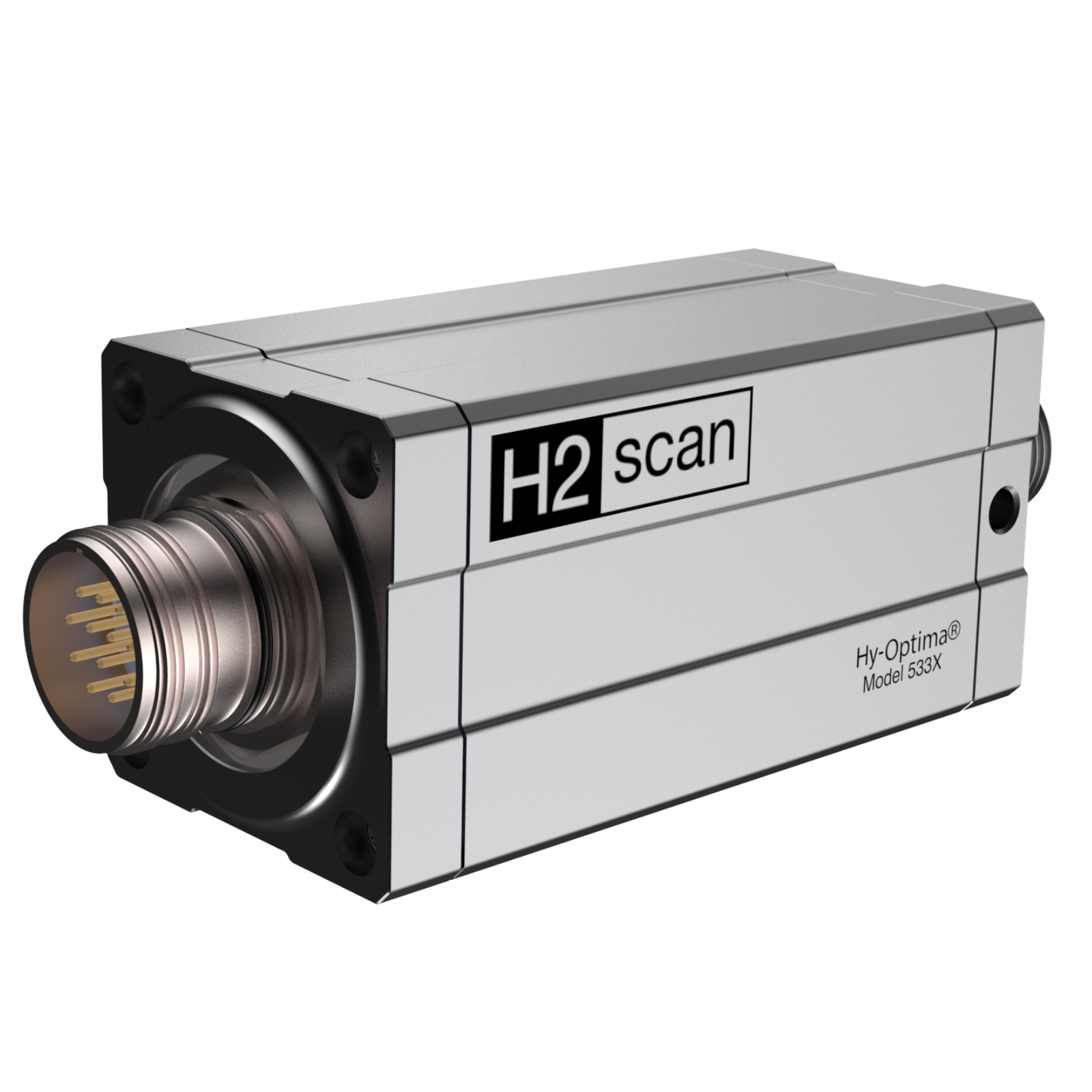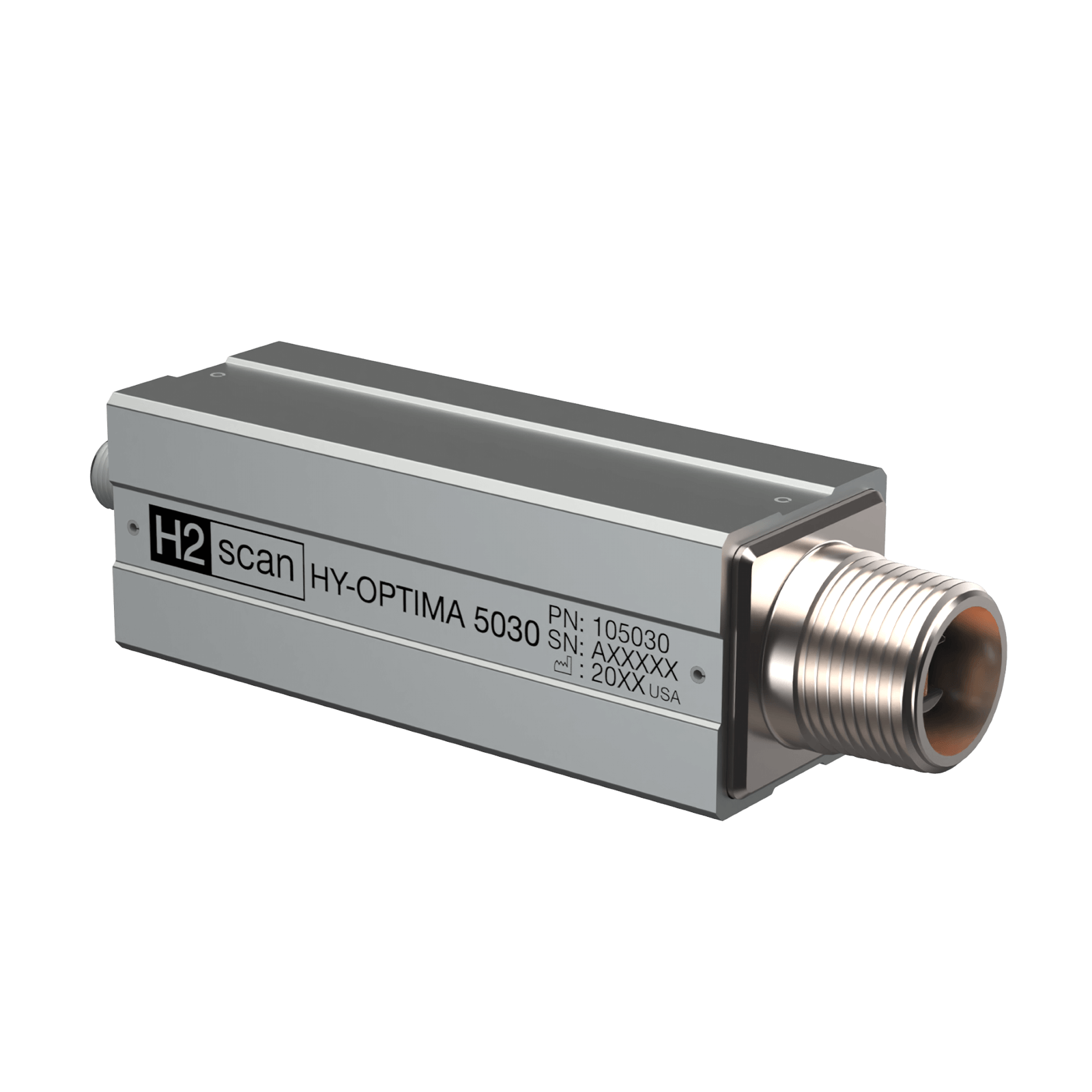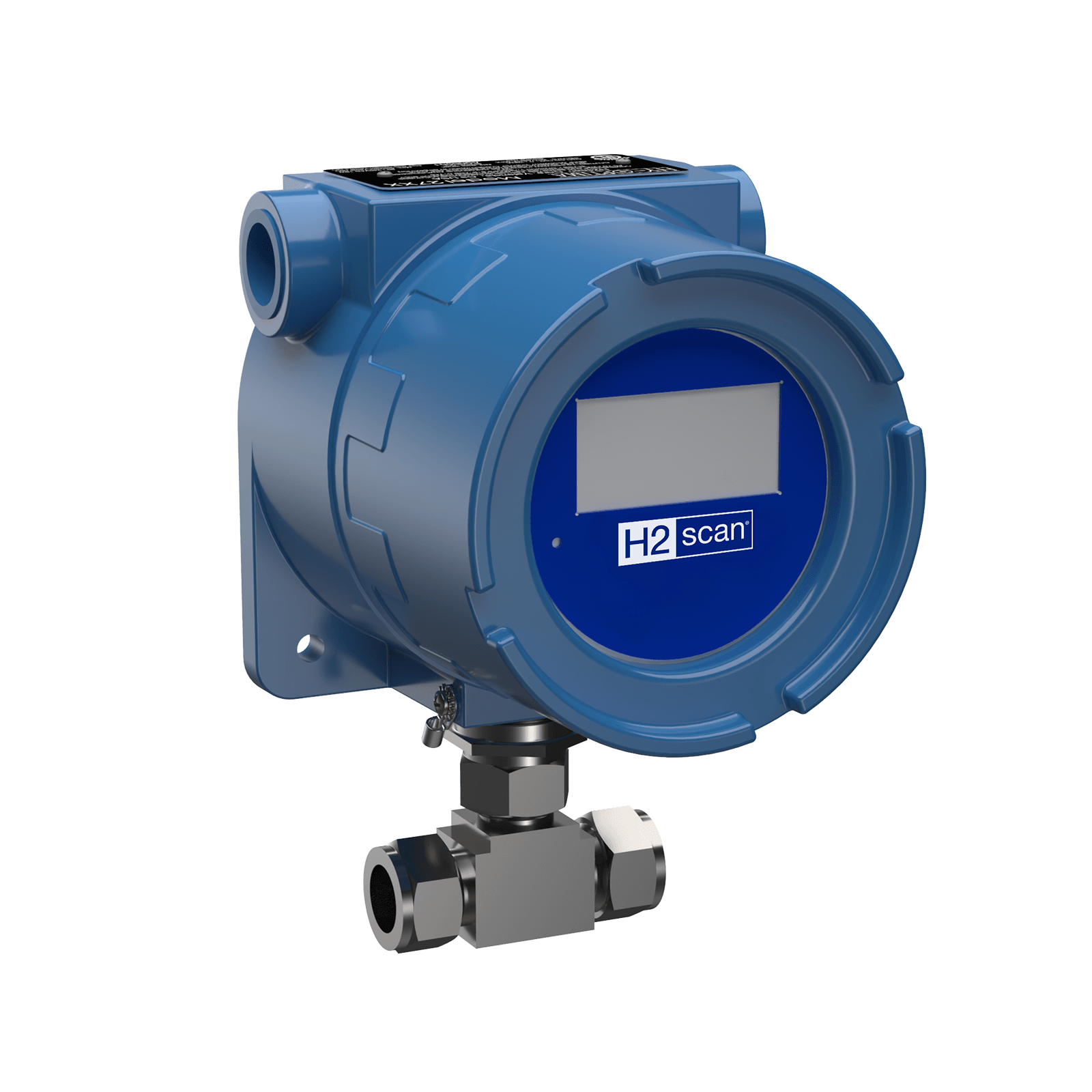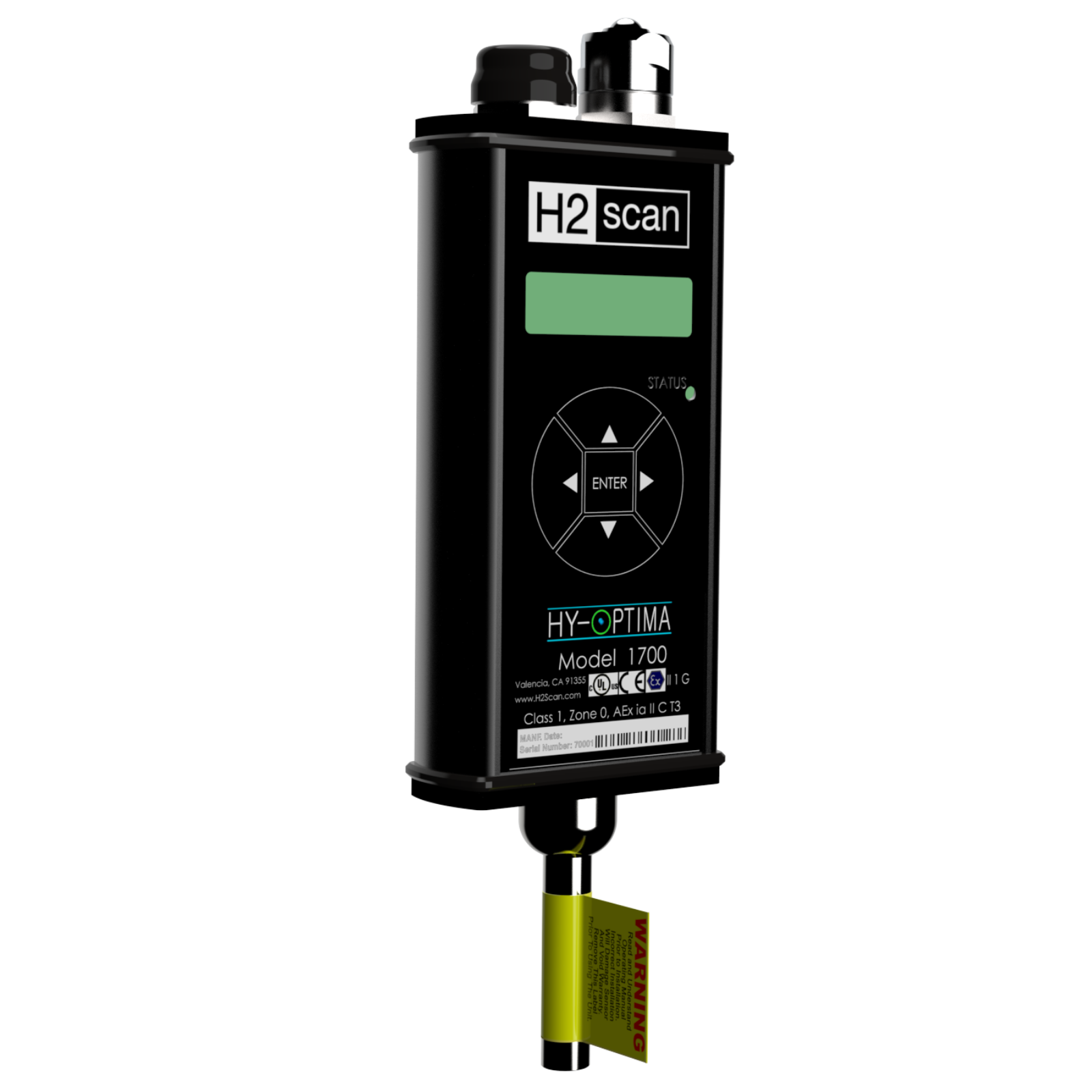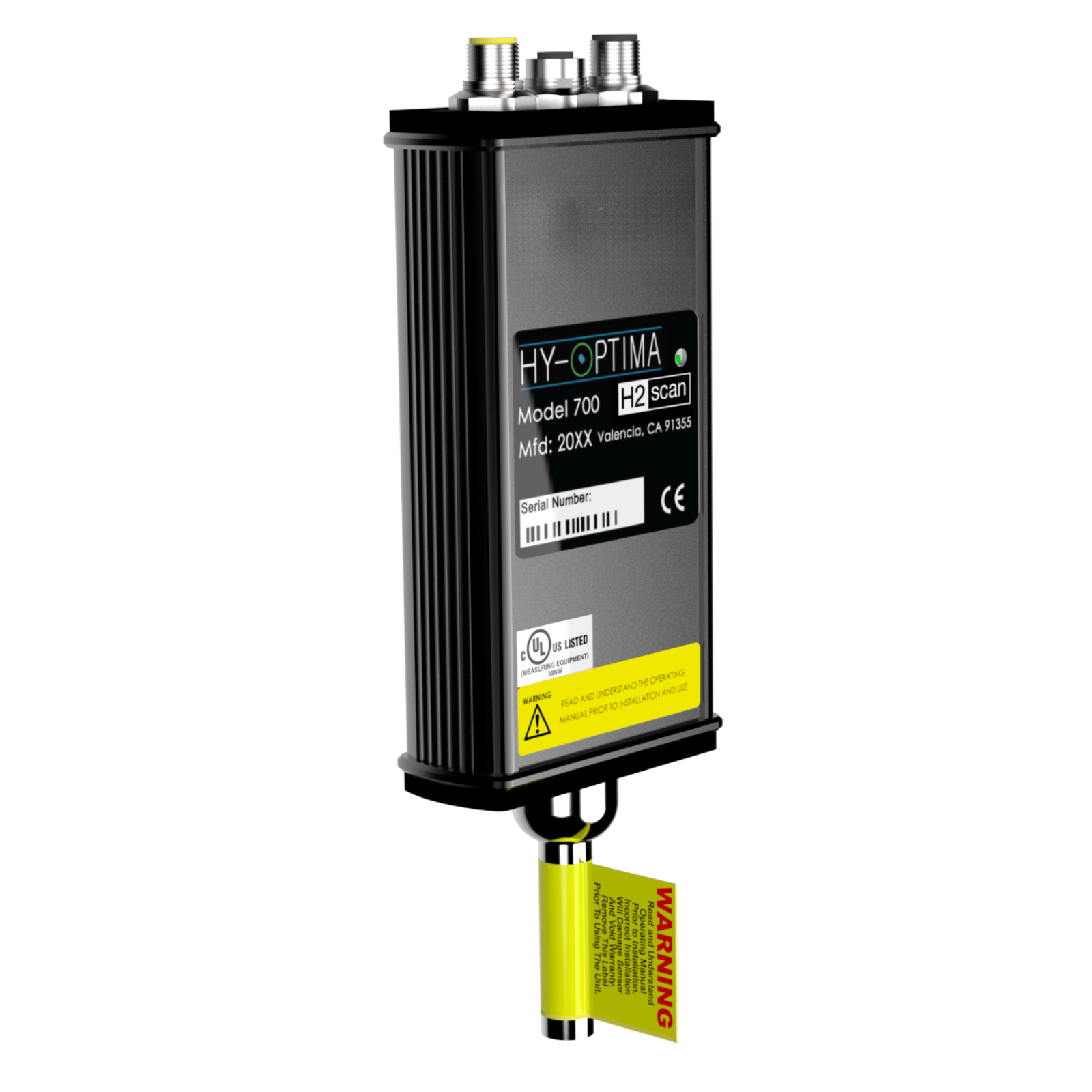In-Line Hydrogen Process Monitors
HY-OPTIMA® products and accessories are designed for electrolyzers and fuel cells and industrial processes.
REQUEST A QUOTEHY-OPTIMA® 5330 IS Gen 5 Analyzer Family
The intrinsically safe HY-OPTIMA 5330 Analyzer family brings unparalleled reliability and durability to hydrogen in-line monitoring for diverse applications within the industrial processing sector, from chemical facilities and refineries to the burgeoning green hydrogen economy. The unit is built on H2scan’s patented, solid-state hydrogen sensing technology, the only hydrogen analyzer on the market that can provide at least 10 years of auto-calibration operation. Easy installation for stand-alone hydrogen measurement or as the hydrogen monitoring component within existing OEM devices.HY-OPTIMA® 5030 Series General Use In-line Hydrogen Process Analyzer
H2scan’s HY-OPTIMA 5030 Series analyzers use H2scan’s Gen 5 technology to provide the most accurate, tolerant, and affordable hydrogen process gas measurement solution for industrial markets. The general purpose-rated analyzer uses a solid-state, non-consumable sensor for direct hydrogen measurement in process gas streams, with no cross sensitivity to other gases. Auto calibration ensures the measurement stays within spec, even in dynamic conditions.HY-OPTIMA® 2700 Series Explosion Proof In-line Hydrogen Process Analyzer
The HY-OPTIMA 2700 Series uses a solid-state, non consumable sensor that is configured to operate in process gas streams. The H2scan solid state technology provides a direct hydrogen measurement that is not cross sensitive to other gases. The HY-OPTIMA 2700 Series is ideal for applications where real-time, hydrogen specific measurements can enhance process plant efficiencies, diagnostics and maintenance management.HY-OPTIMA® 1700 Series Intrinsically Safe In-line Hydrogen Process Analyzer – Discontinued
H2scan's HY-OPTIMA 1700 series in-line, real time hydrogen-specific process analyzers are designed for ease of use, interface flexibility and true process control. The HY-OPTIMA 1700 series is an ATEX certified Intrinsically Safe (IS) device that incorporates our patented solid-state sensor and is configured to operate in background gas streams with up to 95% relative humidity and temperatures up to 60ºC.HY-OPTIMA® 700B Series Process Hydrogen Analyzer
H2scan's HY-OPTIMA 700B series in-line, real time hydrogen-specific process analyzers are designed for ease of use, interface flexibility and true process control. The HY-OPTIMA 700B series is a solid-state sensor that is configured to operate in process gas streams with temperatures up to 60ºC.Line Card: Hydrogen Analyzers • Product Catalog: Process and Safety
Frequently Asked Questions
Where should a hydrogen detector be placed?
An inline hydrogen detector should be placed in the process stream.
What are hydrogen sensors used for?
Inline hydrogen sensors are used for accurately measuring hydrogen concentrations in a process flow, or for hydrogen leak and accumulation detection to ensure that safety standards are maintained.
How does a hydrogen leak detector work?
Hydrogen leak detectors measure the concentration of hydrogen in the air and trigger alarms or safety protocols when hydrogen is detected. They are designed to be accurate at low hydrogen concentrations since the default state is zero hydrogen present.
How to identify hydrogen gas leakage?
The primary way to identify hydrogen gas leakage is to install online hydrogen detectors (sensors) near areas that are prone to leaks, or where hydrogen will accumulate. Other, less reliable methods include routine inspection of equipment and pipelines, possibly with portable handheld devices, and routine maintenance and inspection of areas that are susceptible to failure.
Which room requires a hydrogen detection system?
A hydrogen detection system is required in any room or container where hydrogen can build-up (accumulate) or has potential sources of hydrogen leakage.
Why is a hydrogen leak difficult to detect?
Hydrogen leaks are difficult to detect because hydrogen as a low molecular weight, enabling it to disperse quickly. Hydrogen is the most mobile of the gases. Hydrogen is also colorless and odorless so necessitates the use of specialized detection equipment.

